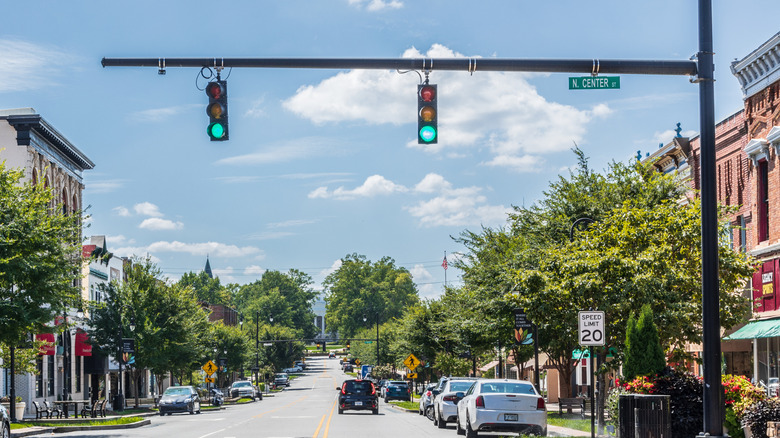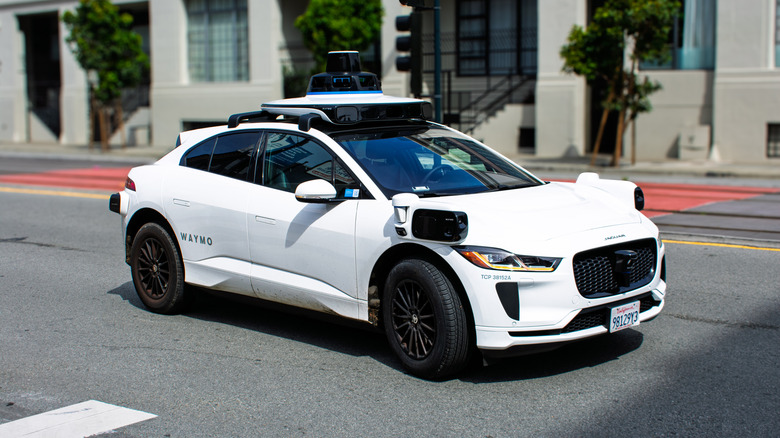Why You Might Start Seeing A Fourth White Light On Stoplights In North Carolina
An idea by researchers at North Carolina State University has been gathering attention across national media and could change the way traffic flows. The proposal adds a fourth white light to stoplights, a signal designed to help human drivers understand when autonomous vehicles (AVs) are taking charge at intersections.
The white light, sometimes called the "white phase," would tell human drivers that autonomous vehicles (AVs) are coordinating traffic through the intersection. Essentially, when enough self-driving cars approach an intersection, they start communicating wirelessly with the traffic signal and each other to figure out the smoothest, safest way for everyone to move through. The traffic light then turns white, signaling to human drivers that it's time to follow the vehicle in front of you—whether that's a human or a self-driving car. If there aren't enough AVs around, the light system just goes back to the usual red, yellow, and green pattern.
So why even bother adding another color to something that's worked for decades? Researchers say the benefits could be huge. Dr. Ali Hajbabaie, one of the NC State engineers behind the concept, said the white light helps human drivers know "what they're supposed to do" when autonomous vehicles take over coordination duties. Plus, his research found that this system could improve safety in the streets, save energy, and reduce travel times by 10%.
So, when are we getting an extra stoplight?
If you ever roll up to a white-light intersection, don't overthink it. "Only thing that human-driven vehicles need to do is adjust to follow the vehicle in front of them," said Hajbabaie. If they stop, you stop. If they move, you go. Keep a safe distance and stay alert, because the white phase can switch back to regular signals if there aren't enough AVs around to manage traffic. The idea is to make it so intuitive that you won't need to memorize new rules—you'll just flow with the traffic naturally, the same way you would in a busy parking lot.
You probably won't see these lights popping up overnight in North Carolina. For the system to really work, experts say about 30-40% of all vehicles would need to be autonomous. Still, carmakers like Tesla, Ford, and Waymo keep pushing toward full autonomy, and the groundwork has to start somewhere. North Carolina could be one of the first testing grounds for it.
"While it is good at this early stage of AV development that people are thinking creatively about how to facilitate the safe deployment of safe AVs, policymakers and infrastructure owners should be careful about jumping too soon on AV-specific investments that may turn out to be premature or even unnecessary," Waymo spokesperson Sandy Karp said in an email to The Associated Press.

